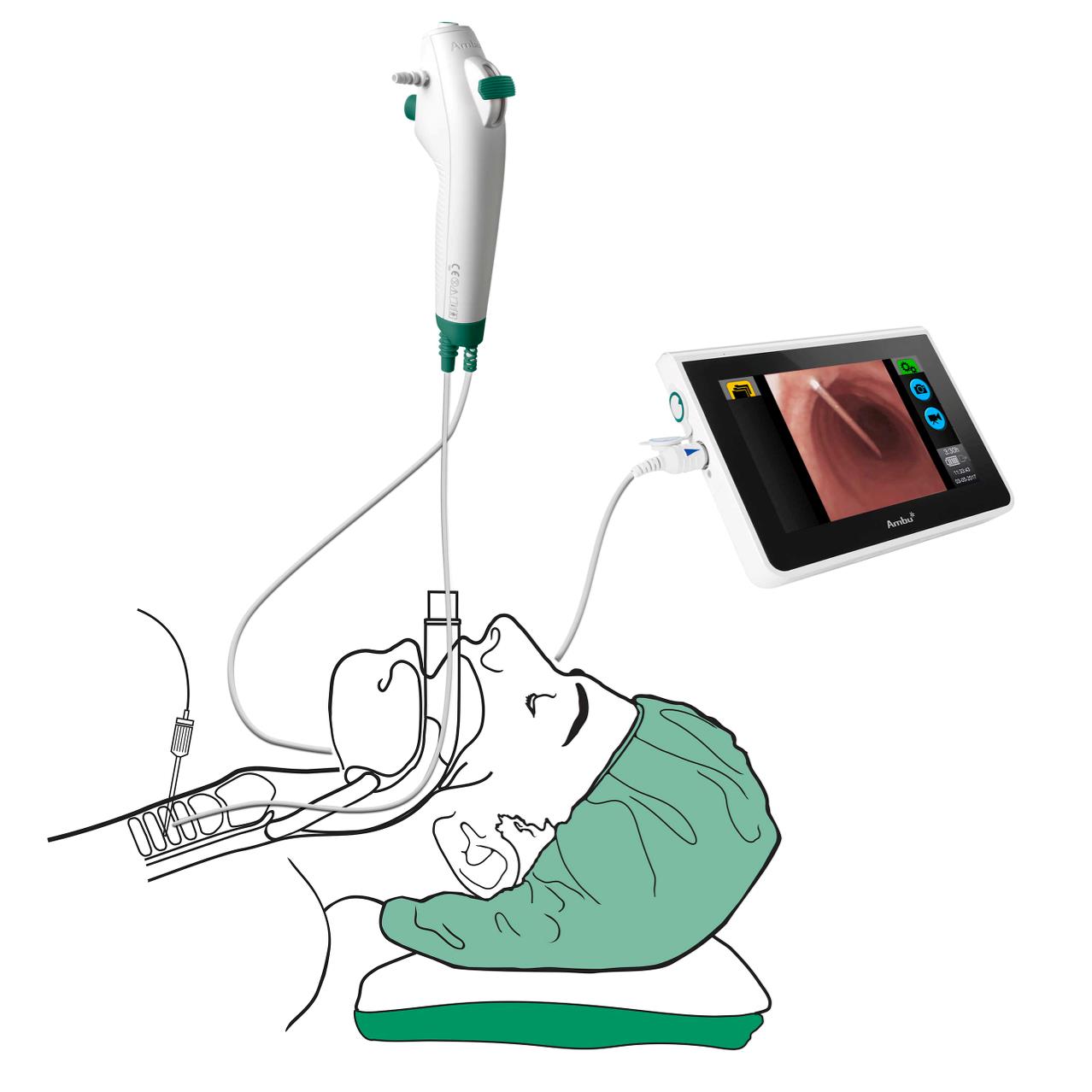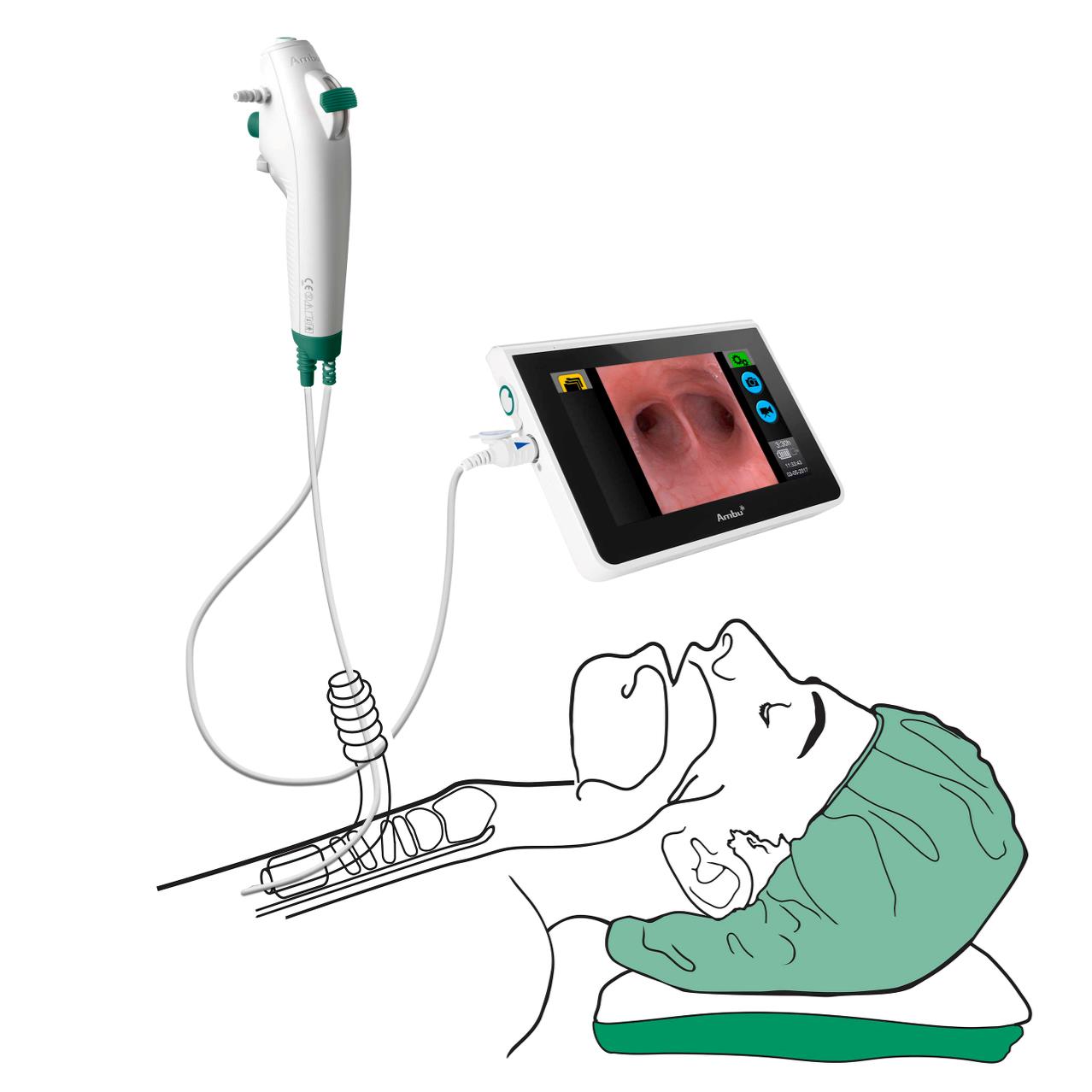Percutaneous Dilatational Tracheostomy is a routine procedure in the ICU
Percutaneous Dilatational Tracheostomy (PDT) is a common bedside procedure for prolonged mechanical ventilation in the adult critical care unit. Fibreoptic bronchoscopy (FOB) is recommended for routine use during a PDT procedure as it provides a direct view and enhances patient safety.
Clinical guidelines recommend use of bronchoscopy guidance during PDT
Tracheostomy in the intensive care unit has become a routine procedure. This trend is reflected in updates of clinical guidelines recommending the immediate availability and use of flexible bronchoscopes and bronchoscopy guidance during PDT procedures.
Difficulty in managing the airway, including percutaneous tracheostomy placement, was the single most important cause of major anaesthesia-related morbidity and mortality disclosed in the extensive NAP4 review from March 2011. Based on the findings, it was recommended in the NAP4 report that a flexible bronchoscope should be immediately available on the ICU to assist with percutaneous tracheostomy placement as well as for regular checking of the position of tracheostomy tubes.
aScope 4 Broncho offers a clear endoscopic view allowing the operator to verify the accurate placement of the guidewire, needle and tracheostomy tube preventing harm to the patient.
Worried about damaging your bronchoscope during PDT?
A PDT procedure puts the bronchoscope at risk – in fact 31 hospitals in Germany, the UK and the USA reported that 1 in 27 bronchoscopes was damaged during PDT procedures. That is twice the risk of expected damages for other procedures performed with reusable bronchoscopes.2
Repairs are costly and take time, with high impact on budgets and availability. These damages contribute to an already high cost of working with reusable bronchoscopes where you also have to consider acquisition and reprocessing costs. A study has revealed an average cost of $406 for every PDT procedure conducted with reusable bronchoscopes.2
aScope 4 Broncho is the ideal alternative to reusable bronchoscopes for visual monitoring during PDT procedures allowing you to save $157 per PDT procedure.
+100%*
Increase in damage risk
$406
Average cost per PDT procedure
$157
Cost savings per PDT procedure2
* Compared to expected damage rates for other bedside bronchoscopy procedures
aScope 4 Broncho Key Benefits
Easy to handle
The lightweight design of aScope 4 Broncho makes it easy to handle and the portability of the aScope system is convenient for bedside procedures in the intensive care unit.
Clear endoscopic view
aScope offers a clear endoscopic view that allows the operator to verify the accurate placement of the guidewire, needle and tracheostomy tube preventing harm to the patient.
Clear cost advantages
The single-use concept has clear advantages in that it eliminates repair costs normally associated with the use of reusable bronchoscopes for PDT procedures. In addition, it increases patient safety as there is no risk of cross-contamination between patients.
aScope 4 Broncho for endoscopic guidance during PDT
aScope 4 Broncho offers a clear endoscopic view, allowing the operator to verify the accurate placement of the guidewire, needle and tracheostomy tube preventing damage to the patient.
Bronchoscopy guidance during PDT is likely to improve patient safety
Bronchoscopy guidance during PDT is likely to improve patient safety as it can guide the correct placement of the introducer needle, the guidewire and the cannula during the procedure.
With bronchoscopy guidance, severe complications such as perforation of the tracheal wall may be avoided.
Bronchoscopy guidance, however, is only one of several factors that improve patient safety during PDT.
According to Simon et al1 when performing PDT, strict consideration of contraindications, bronchoscopy guidance during the entire procedure, an experienced team, avoidance of a low tracheostomy puncture site and avoidance of guidewire kinking, as well as the use of outer flange tracheal cannula sutures are amongst the most important safety factors.
Bronchoscopy guidance during the PDT procedure enhances patient safety

After the PDT procedure, correct placement of the tracheostomy tube is verified.

References
- Simon et al. Death after percutaneous dilatational tracheostomy: a systematic review and analysis of risk factors, Critical Care 2013, 17:R258
- Sohrt, A., Ehlers, L., Udsen, F.W. et al. Cost Comparison of Single-Use Versus Reusable Bronchoscopes Used for Percutaneous Dilatational Tracheostomy. PharmacoEconomics Open (2018)


